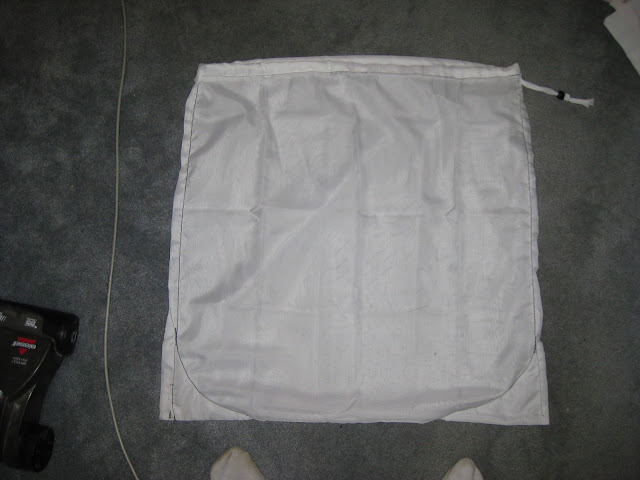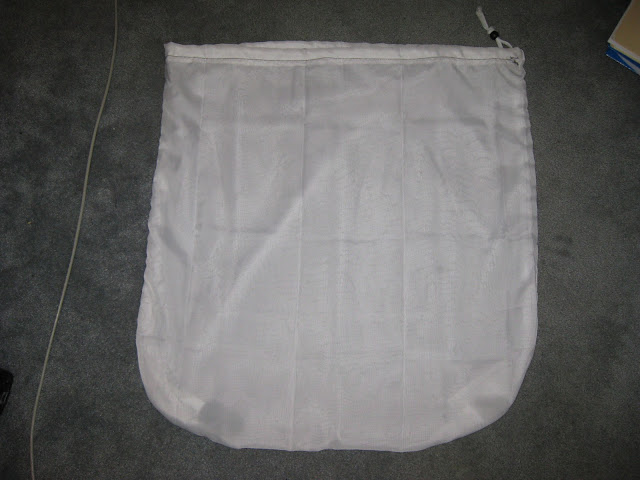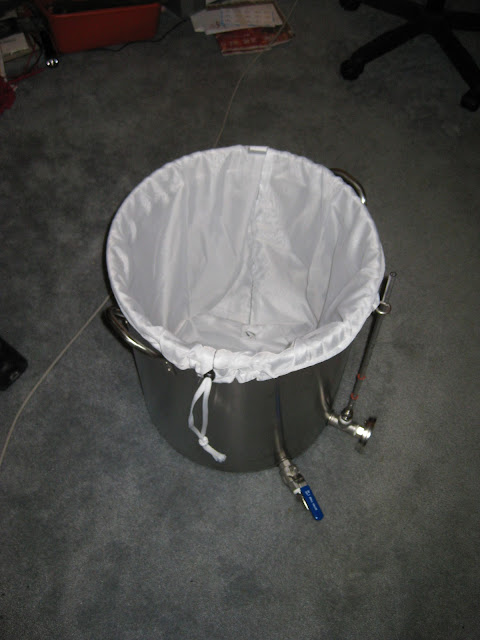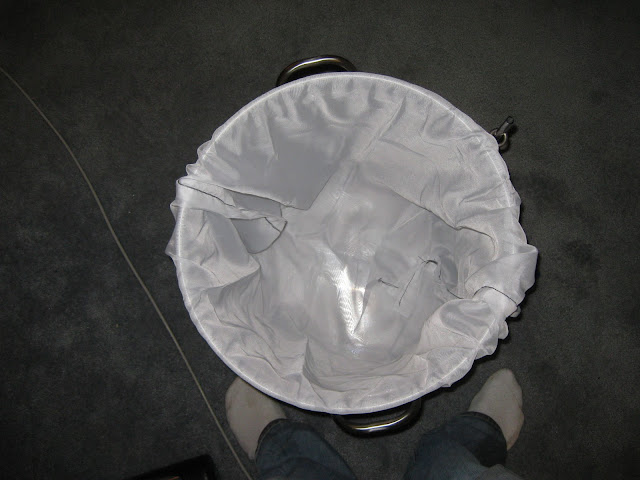mtbiker278
Well-Known Member
Hey All,
So I wanted to show off my fix for my last disaster. I went to the fabric store and tried to find the Swiss Voile with no sucess. The closest this was this wedding dress fabric that had some sparkly stuff weaved into it. Instead I got some polyester yarn and a polyester drawstring. They I made a stop at walmart for a $5 curtain and some mason jars (yeast washing). About a half hour later I ended up with the following:




It fits my 15.5gal pot a little loose but I'm ok with that. All told I have a doubled over bag with a draw-string that cost me about $12 to make. It should be plenty sturdy to hold the weight.
Markab - I looked up some of the chemical properties of Nylon and aside from the plasticizers, there was only one chemical I found that could be harmful when nylon degrades. However, it's boil point is room temp, so I'm pretty sure whatever gases were release they were boiled off during the 60min time period.
On the same line of thought, should i still find that steamer basket to prop my new bag up off the bottom of the pot? From what I've read people just through them in without issue? I suppose it's really only a problem if I'm trying to heat the mash, and could be avoided by mashing in at ~165F, and some liberal application of sleeping bags and blankets.
Thanks again for all the replies and feedback!
So I wanted to show off my fix for my last disaster. I went to the fabric store and tried to find the Swiss Voile with no sucess. The closest this was this wedding dress fabric that had some sparkly stuff weaved into it. Instead I got some polyester yarn and a polyester drawstring. They I made a stop at walmart for a $5 curtain and some mason jars (yeast washing). About a half hour later I ended up with the following:




It fits my 15.5gal pot a little loose but I'm ok with that. All told I have a doubled over bag with a draw-string that cost me about $12 to make. It should be plenty sturdy to hold the weight.
Markab - I looked up some of the chemical properties of Nylon and aside from the plasticizers, there was only one chemical I found that could be harmful when nylon degrades. However, it's boil point is room temp, so I'm pretty sure whatever gases were release they were boiled off during the 60min time period.
On the same line of thought, should i still find that steamer basket to prop my new bag up off the bottom of the pot? From what I've read people just through them in without issue? I suppose it's really only a problem if I'm trying to heat the mash, and could be avoided by mashing in at ~165F, and some liberal application of sleeping bags and blankets.
Thanks again for all the replies and feedback!


